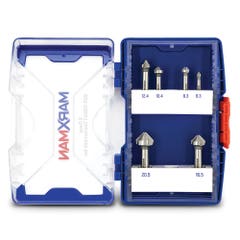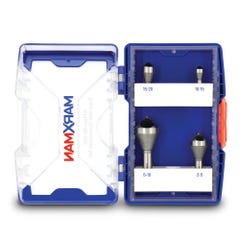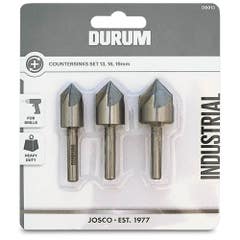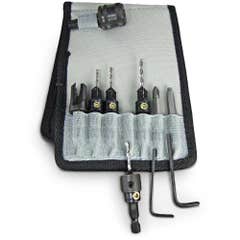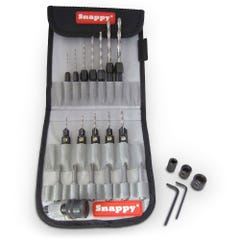Countersink Drill Bits
Countersink drill bits are an essential tool for any woodworker or metalworker. These specialized drill bits are designed to create a conical hole in a material that allows for the smooth, flush fitting of screws, bolts, and other fasteners.
At Total Tools, we carry many different types of countersink drill bits from top-selling brands such as P&N, Marxman, Snappy Tools, Durum, and more. Choosing the right one can be confusing for those who are new to woodworking or metalworking. To better help you decide, we have a comprehensive guide on how to choose the right countersink drill bits for your project, as well as how to use them safely and properly.
What are countersink drill bits?
The purpose of countersink drill bits is to make a conical hole in a workpiece that can be fitted with a screw or bolt and have a smooth, flush finish. These bits are frequently utilised in a range of industries, including metalworking, woodworking, and other fields where a smooth, flat finish is sought.
What are the things to consider when choosing the right countersink drill bit?
There are several factors to consider when choosing the right countersink drill bit for your project. These include:
- Material: As mentioned above, some countersink drill bits are intended for use with metal, while others are made exclusively for use with wood. To achieve the greatest results, it's critical to select the proper type of countersink drill bit for the material you are dealing with.
- Size: There are several sizes available for countersink drill bits, so make sure you pick the one that is appropriate for the screws or bolts you want to use. If the countersink drill bit is too tiny, the hole it makes could not be big enough to fit the fastener. The material may become weaker and the fastener may sit too low if the countersink drill bit is too large. On the other hand, if the hole is too large, the material may become.
- Shape: Conical, cylindrical, and tapered are just a few of the different forms that countersink drill bits may take. It's critical to select the appropriate form for your project since the shape of the countersink drill bit will dictate the shape of the hole it produces.
- Flutes: Straight or spiral flutes can be found on countersink drill bits. While spiral flutes are excellent for drilling through hard materials, straight flutes work better for soft materials.
- Coating: To enhance their performance and increase their longevity, certain countersink drill bits include a coating of a specific substance, such titanium or cobalt.
How to use countersink drill bits safely and properly?
Using a countersink drill bit is quite simple, but to achieve the greatest results, it's crucial to follow a few fundamental procedures:
- Mark the location of the hole you wish to make. Depending on the substance you are dealing with, you can accomplish this using a pencil or a marking instrument.
- Use the countersink drill bit to set up your drill. Make that the countersink drill bit is correctly tightened and that the drill is firmly fastened or kept in place.
- Drill the hole slowly and with care. The countersink drill bit might shatter or the material could split if you move too quickly or use too much pressure.
- Verify the fastener's fit. Test the fit of the fastener after drilling the hole. To hold the workpiece steadily and guarantee that the hole is drilled precisely and consistently, it is also a good idea to use a drill press or other sort of holding device.




